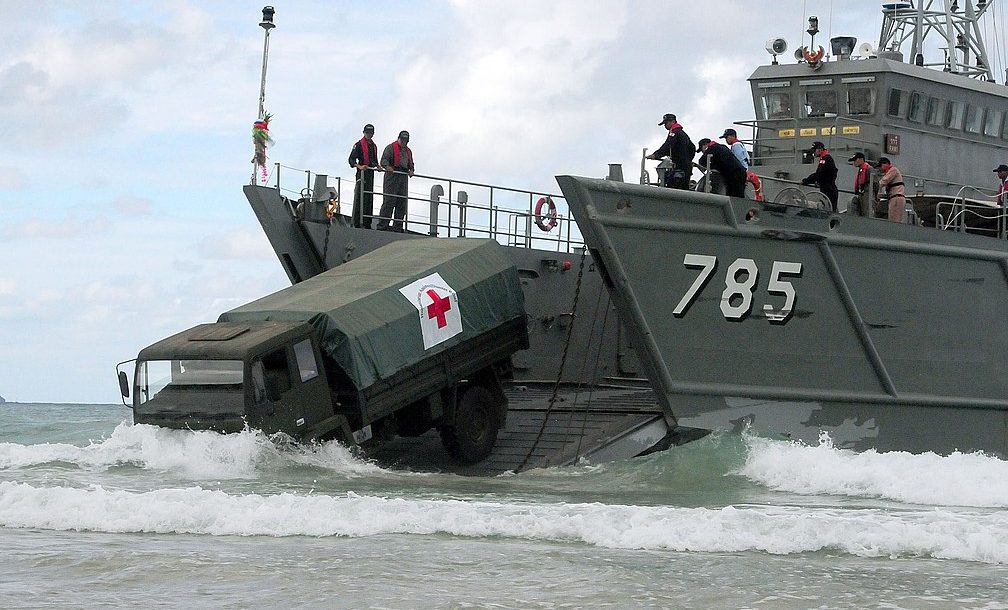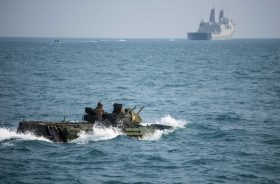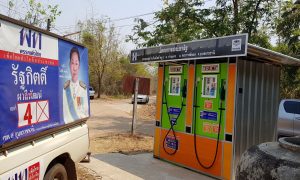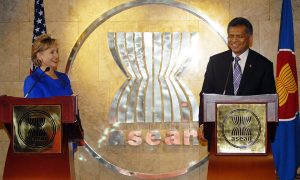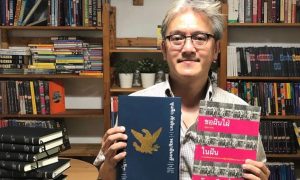On 28 October, 2021, the Thai Ministry of Defence’s (henceforth: ‘Ministry’) Defence Technology Institute (henceforth: ‘Institute’) organised a webinar on Thailand’s domestic defence industry, the inner workings, endeavours of the Institute over the last several years, and its aspirations and ambitions over the coming years ahead.
The webinar revealed much, notably that the Institute has gradually increased its standing inside of the Ministry after a roughly 15-year journey and finally appears to be in a somewhat fortuitous political position. If this is so, the implications are wide-ranging for the academic and private sectors, ranging from a possible drop in foreign purchases of certain equipment types from external defence contractors to rise of a new influence node on the network of power at the helm of the Thai armed forces leadership.
There is an overall absence of academic studies on the history of the Institute, its role in shaping the Thai defence industry since its founding, its function as a possible instrument for Security Sector Reform (SSR) efforts in Thailand, and its presence as a political actor immersed amongst the factionalism and clientelism existing inside the Ministry and armed forces. The information available focusses almost exclusively on technological developments and is parcelled out between the Institute’s multi-layered media platforms, leaked information, public statements from employees, domestic non-professional websites, think tank working papers, and reports at international conferences by research analysts from the Institute.
This short article sheds light on the growing influence that the Institute seems to have garnered inside the Ministry since its founding with the technological developments undertaken by the Institute discussed only in passing.
After an arduous materialisation due to political in-fighting amid the yellow and red shirts crisis that ensued after the ousting of the Thai Prime Minister Thaksin Shinawatra (2006)—leading to three quick changes in administration (Surayud Chulanont (2006-08), Samak Sundaravej (2008), Abhisit Vejjajiva (2008-11)—the Institute was finally established on 1 January, 2009, with an official printed announcement in the Royal Thai Government Gazette.
There is scant evidence that the Institute’s “annual action plans” (2010-2013) during these founding years were widely productive in manufacturing technological developments as coveted in the four strategies of the Defence Technology Roadmap (2010-2024). The most consequential product during this time period is arguably the formulation of three master plans (2012): (1) Unmanned Vehicle Systems Master Plan, (2) Simulation and Virtual Reality Master Plan, and the (3) Information Technology and Communication Research and Development Master Plan.
At the end of last year, Air Chief Marshal Preecha Pradabmook, Ph.D., Director-General of the Institute, explained that the lack of substantive, industrial work during this period is linked to the absence of a legal personhood and budgetary constraints, as oftentimes has been the case with newly inducted organisations in the Ministry. This was reiterated during the webinar by the research analysts from the Institute in attendance.
The Thai Navy’s ‘no-response response’ to the proposed re-establishment of the US First Fleet
The re-establishment of the First Fleet holds significant implications for Thailand’s small navy.
A secondary explanation may be the dearth of constructive communication between the Institute and the Defence Science and Technology Department (DSTD) around this time. The latter is responsible within the Ministry for operational support of scientific and technological development. Poor communication was not likely an issue of work redundancy, for the former was then solely responsible for designing prototypes and the latter actualising them through the industrial production processes established in a previous era. The reason was more likely the result of the Institute securing its opening budget (2009) of hundred million baht from the DSTD’s own allocated funds. In time, this may have generated animosity between the two organisations, thereby manifesting a lack of clear understanding of the ends desired by each organisation and in correlation to one another.
Irrespective of the specific causal sources of the structural breakdown—legal personhood, budgetary constraints, and dearth of administrative communication—more than a decade after its founding the Thai Cabinet ordered system-wide structural reforms of the Institute through the 2019 Defence Technology Act (DTA). These reforms permitted the Institute to transition from a peripheral actor to a resonant voice inside the Ministry: It gave the Institute a greater voice and relative self-drive/confidence to guide the Ministry in determining policies and plans in the development of science and technology for national defence.
This conclusion is also elucidated from two other points. First, the research and development (R&D) percentage within the defence budget will remain unchanged and, starting from next year, will actually increase despite the Royal Thai Armed Forces’ (RTArF) defence budget having decreased by roughly USD 1.4 billion since the start of the COVID-19 global pandemic and projected not to return to its historical budget and percentage of GDP until 2027. Second, the new Chairman of the Board, General Popon Maneerin, appears in close league with the Prayut-Prawit (Wongsuwan) faction and the monarchy. Case in point, the Thai Privy Council—the administrative body that advises the monarchy on daily affairs—through Air Chief Marshal Chalit Phukphasuk, bestowed upon Preecha Pradabmook the 2021 Executive of the Year Award and Organisation of the Year award in the national security sector.
Altogether, unless it becomes unable to follow through on its ongoing technological projects, the Institute will likely continue increasing its standing inside the Ministry over the coming years.
 Facebook
Facebook  Twitter
Twitter  Soundcloud
Soundcloud  Youtube
Youtube  Rss
Rss 